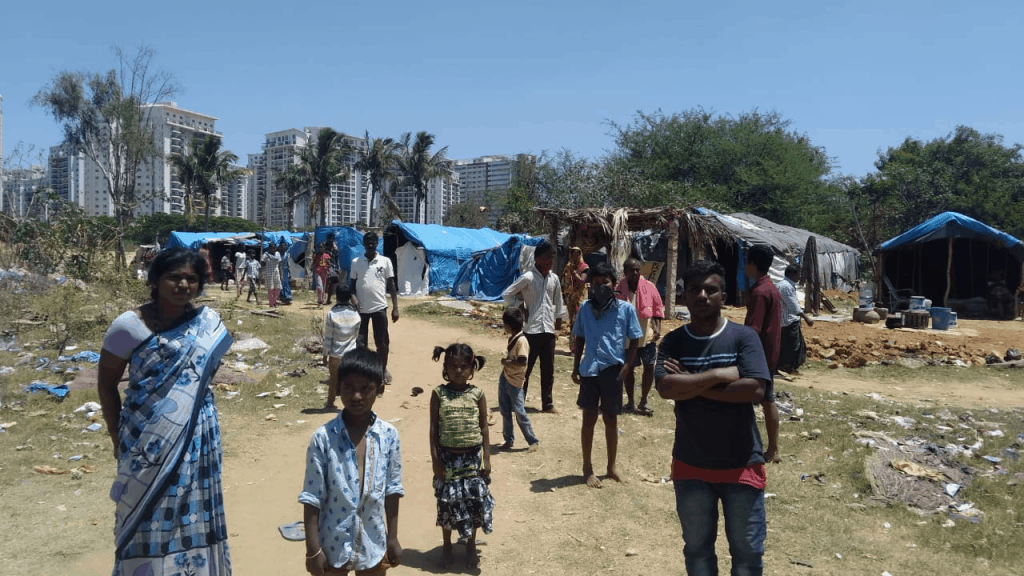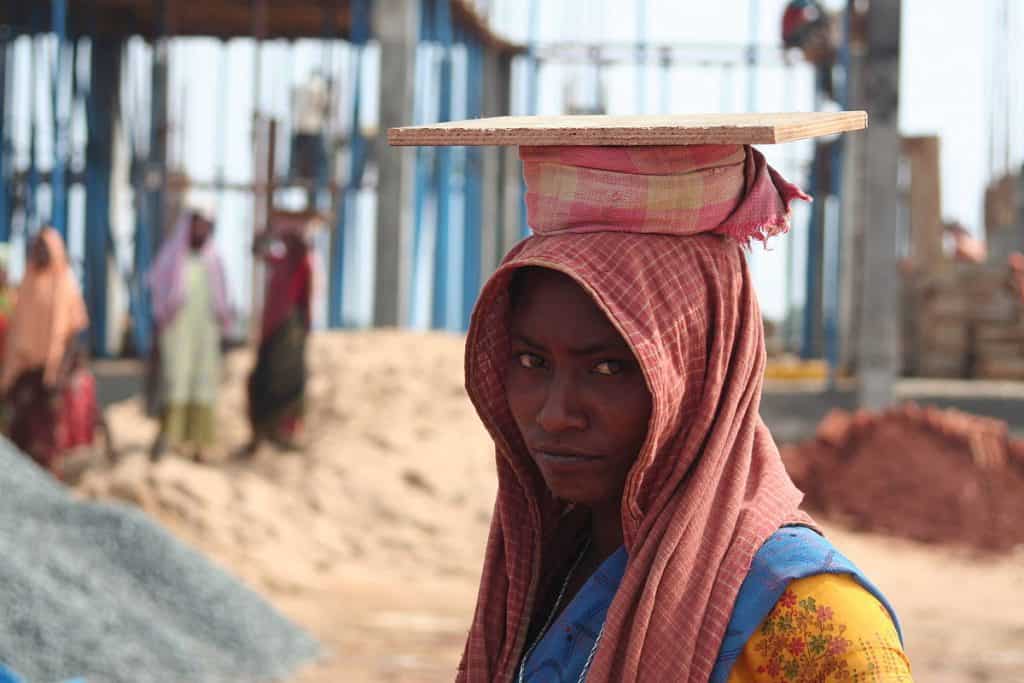The compulsions of demand and supply are dictating the state of affairs for migrant workers across the country after the second COVID wave. The packed trains from states like UP, Bihar, Odisha and West Bengal are an indicator of the rush of reverse migration after the hellish return-to-home experience of last year. But as workers return, they are finding that employment conditions are not the same as earlier.
Migrant labour employed in Micro, Small and Medium Enterprises (MSMEs) are the most affected. As per government data, India has around 6.3 crore MSMEs. Delhi-based All India Trade Union Congress Secretary General Amarjeet Kaur presents a grim picture. “They are the worst sufferers as almost 35% of the MSMEs have shut down,” said Amarjeet Kaur. “These units employed over 20 crore people. Out of these 10-12 crore people are now unemployed”.
Owing to production cut backs by large and small industries, businesses are freezing hiring and wages. A majority of industries are currently operating at just 30-60% of capacity. “As a result, migrant workers coming back to cities are facing exploitation,” adds Amarjeet. “Many are not able to find employment, and others are working at half wages”.
No hiring, lower wages
Even skilled workers are finding it difficult to get work, forcing them into semi-skilled, even unskilled jobs or accept short term gigs as hawkers and vendors. Like Shyam Sunder Pandey from Gorakhpur in UP. A motor mechanic and welder, Pandey used to ply his trade in a motor workshop in Chandigarh. The first lockdown forced him to return to his native place along with his family where they own two bighas of land. But Pande found it impossible to eke out a living from the land. The Rs 30,000 loan he took didn’t last long either.
Read more: Continuing inflation, slowdown leading to urban hunger
Staring into the dark abyss of hopelessness, he chose to return to Chandigarh. But the workshop had downsized and Pandey was left unemployed. These days, he plies a rented vegetable pushcart in the outskirts of the city. “I did not get any help from the government,” said Pandey. “Now, I can afford just two square meals a day and save some to pay my loan instalment and hope things will change for the better”.

Pic: Twitter handle of DCP, Whitefield
As per the Indian Council for Research on International Economic Relations (ICRIER) and Inferential Survey Statistics and Research Foundation (ISSRF), the first COVID wave resulted in 6.7 million people returning to 118 districts in UP, Bihar, Jharkhand, West Bengal, Odisha and Chhatisgarh. Out of these, 38.6% found no work back home. Overall, rural household incomes saw a decline of 85 per cent.
But the jobs situation in cities has become worse after the second wave. In cities like Chandigarh, a section of migrant workers had chosen to stay behind, taking up any work that came their way, even for as little as Rs 100 a day. “The scale of migration was not as much as we had a moderate lockdown,” said Vivek Trivedi, a social development expert. “But income levels have dropped. Monitoring, counselling and policies based on the actual needs of the migrant workers are necessary to deal with any future lockdowns.”

Pic: Carla Antonini/Wikimedia Commons (CC BY-SA 3.0)
No demand, no production
The migrant labour in the tri-city of Chandigarh, Zirakpur, and Mohali, who have stayed back in their native villages remain in touch with their erstwhile employers or their union leaders. “They keep themselves updated about the general employment scenario and the demand, especially in the construction sector,” says Harpreet Kaur, a public legal aid volunteer who works closely with the migrant workers. “More than 90 per cent of the migrants are back looking for work.”
Sher Singh, head of one of the largest construction firms in the tri-city area is, therefore, not worried about labour shortage. “They are just a phone call away,” says Singh. “But we have had to scale down as people are more cautious now in spending money. Also, prices of raw material like steel are up and credit lines have dried up.”
In Mumbai, however, the situation appears to be looking up. The maximum city depends largely on migrant workers to keep it going and they are streaming back as the city opens up progressively. Vandana Azad, an activist, who has been closely observing the phenomenon says that conditions are not the same as last year.
“This year more people stayed back,” says Azad. “But industrial production is down and people are not getting the kind of work or wages they were getting earlier. I do not expect labour shortage to be an issue. We expect a spurt in the employment levels as demand increases and production goes full swing”.
Read more: Hunger and fear of another lockdown stalks migrant workers
But economic compulsions and fear of another lockdown continues to haunt these workers. Kishen Dev Mukhiya from Bachopatti Nagri in Bihar’s Sitamarhi district and his three brothers own two bighas of land back home. But that barely sustains the family as they get no government relief. “The fields and factories of Punjab remain our main source of livelihood,” says Mukhiya.
“As mills and factories have closed down, there are fewer jobs here,” said Ghanshyam Singh, one of Mukhiya’s co-workers. “We will work in the farm till the paddy season is over and after that try and find employment in other sectors such as textiles and construction”.
Industry in Punjab and Himachal Pradesh expect migrant workers to return as demand picks up. “About 40% of our workers have returned and more are coming back,” said R S Sachdeva, President, PHD Chamber of Commerce and Industry. “Unfortunately, at the moment orders are lacking. It will take at least eight months for things to get back on track. Fortunately, the pharmaceutical industry in Baddi, Himachal Pradesh is doing good, so a lot of them have got absorbed in these units.”
“During normal times, my unit employed around 1200 people, but now we have just 250 people,” said Ajit Lakra, Managing Director, Superfine Knitters Limited. “It would not be possible to re-employ the returnees due to the slump in demand. But people who were working with us earlier have been in touch. The government has not taken any steps to help industry. The MSMEs, the largest employers of migrant labour, have suffered the most”.
Rajesh Kharbanda, Managing Director of Jalandhar-based sports brand NIVIA echoes this sentiment. “This year the problem is largely on the demand front and we too have had to reduce the workforce”. He, however, remains upbeat about the demand for sports goods. “Export markets for sports goods are opening up. Here, people have remained indoors for too long. The fitness sector is in for a sharp growth.”
Workers need cash in hand
While industry and labour struggle to return to some semblance of the old days, suggestions to help both are aplenty. Rahul Verma, President of Punjab Dyers Association, suggests creation of a joint job portal for migrant workers by the governments of Punjab, Bihar and UP to bring together employers and workers. While AITUC’s Amarjeet Kaur wants a social security net for urban migrant workers like NREGA for rural workers.
Among the immediate steps governments needs to take is to implement the recent Supreme Court judgement calling for compensation to workers who lost their jobs because of COVID. Secondly, a legislation for the welfare of migrant workers ought to be quickly taken up in parliament.
Kaur strongly advocates registration of all informal economy workers – whether migrant or non-migrant. “We need to have a universal approach, instead of compartmentalizing them”. Kaur also strongly advocates cash payments instead of money transfer in ‘Jan Dhan’ accounts as 60% of these accounts have been closed due to non-activity.
Few economists and development experts disagree on that.